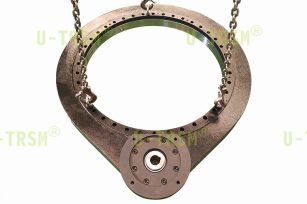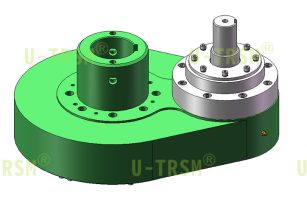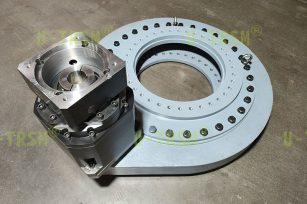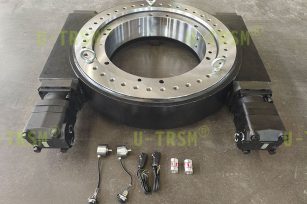Latest Products
We keep on updating and iterating our products, optimizing the structural design and creating a more scientific and reliable slewing drive device.
-
 Selection and characteristics of slewing d...
Selection and characteristics of slewing d...This slewing drive is used in automated mixing equipment. The customer requires that it rotate in the same direction ...
Detailed instructions Send mail -
 Analysis of the high speed rotating double...
Analysis of the high speed rotating double...This double row ball gear type slew drive is used in automation equipment. The customer requires ultra-high speed ope...
Detailed instructions Send mail -
 30855 slew drive assembly: precise protect...
30855 slew drive assembly: precise protect...Introduction In the field of industrial transmission, U-TRSM has always been a leader in innovation, committed...
Detailed instructions Send mail -
 High load slewing drive solution for deep ...
High load slewing drive solution for deep ...This slewing drive is used in marine machinery and equipment, suitable for underwater locations at depths of up to 30...
Detailed instructions Send mail
What are the effects of extreme temperature environments on the transmission performance of slewing drives?
Publish time:2025/01/11 News Views:152
The U-TRSM design engineers often encounter high or low temperature environment in the process of discussing solutions with the customers, so in these extreme temperature environments, what will be the impact on the transmission performance of the slewing drive? Here is a brief analysis:
Tempered and quenched gears can usually be operated properly in the temperature range of -40°C to 250°C. The material is suitable for most industrial applications. In this temperature range, the mechanical properties and dimensional stability of the material are good enough to meet the requirements of most industrial applications.
At higher temperatures (over 250°C), although the tempering treatment improves the heat resistance of the material, there is still a gradual decrease in the hardness and strength of the material, which may lead to a reduction in the load carrying capacity and wear resistance of the gear. Therefore, if it is necessary to use it in a high-temperature environment, it is recommended that appropriate cooling measures be taken or that a more heat-resistant material be selected.
At very low temperatures (below -40°C), the toughness of gears decreases and their brittleness increases, making them susceptible to brittle fracture. Therefore, if it is necessary to use in a low-temperature environment, it is recommended to take appropriate heating measures or choose a material that is more resistant to low temperatures.
In high-temperature environments (over 150°C), a synthetic lubricant or grease that is resistant to high temperatures should be selected to ensure lubrication.
At low temperatures (below -40°C), a low viscosity lubricant or low temperature grease should be selected to ensure lubrication at start-up.
Design effective cooling system such as air-cooled, water-cooled or oil-cooled to control the temperature of the gearbox in high temperature environment. Installation of temperature sensors to monitor the temperature of the gearbox in real time to ensure that the temperature does not exceed the safe range.
Design effective heating system in low temperature environment, such as electric heating or hot air heating to increase the temperature of the gearbox. Install temperature sensors to ensure that the temperature is within the safe range. Regularly check the wear of gears, the state of the lubrication system and the accuracy of temperature sensors to find and solve problems in time. Ensure the normal operation of the lubrication system and replace worn parts in time.
U-TRSM designs and manufactures gear slewing drives, which are generally material tempered and tooth hardened, and gear transmission is suitable for operation in temperatures ranging from -40°C to 250°C. The reliability and service life of gear transmission system in different temperature environments can be ensured by proper lubricant selection, cooling and heating system design, as well as regular maintenance and inspection.
- What are the effects of gear radial runout...
- Force rational design of integrated slewin...
- Application Analysis Of Slewing Bearing In...
- How to improve the slewing bearing’s...
- Analysis of the force of the spur gear sle...
- How often do you add grease to the slewing...
- Reason analysis and solutions for the prob...
- How to improve the service life of slewing...










